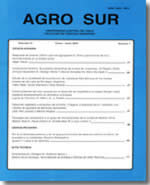Use of wild and cultivated species for breeding potatoes
Main Article Content
Abstract
Even though the potential wealth of Solanum for breeding is large, many plant breeders have indicated that the material used with this purpose internationally, has not been genetically diverse, with the genetic pool being intensively re-used.
Since the introduction of the potato to Europe (c. 1550), all varieties bred for more than 250 years have seemingly derived from only two sources. However, after the great famine caused by Phythopthora infestans (between 1846 – 1850), which destroyed potato crops in many countries across the European continent; many breeders have worked hard to find additional potato genes to broaden the genetic pool of potato varieties.
Multiple collections and numerous evaluation studies have been carried out, and new methods for breeding have been introduced. These efforts have allowed the introduction of wild species and cultivars into the genetic pool, and today there is a printed catalog that lists over 4,200 cultivated varieties globally, in addition to more than 5,000 native varieties which are cultivated in Latin American countries.
New challenges for potato breeders are to improve the production of the potato in less than optimum climatic conditions, with the use of less water and agrochemicals. If this can be achieved, it will contribute to solutions for potato production worldwide. Global warming; energy shortages, the rising cost of fertilizers, and the production of healthy foods should also be on the list of challenges to take into consideration for future improvements, through conventional and unconventional technologies.

